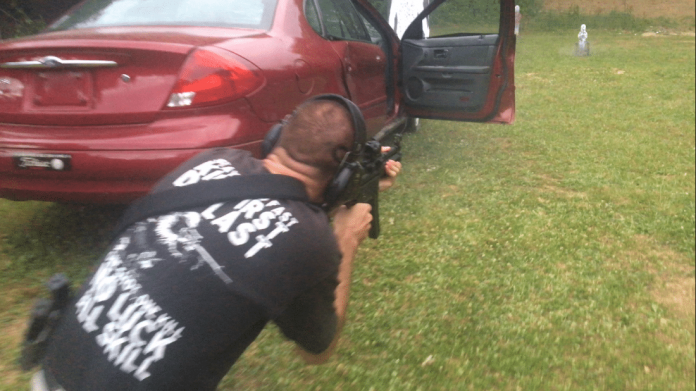
Day 1
The Teufelshund Tactical MP5/UMP Operators Course started at 9:30. A later start but it gave me it gave me time to load my gear and grab essential coffee.
Read the precourse write up here
TLDR crowd head to the end, the quick version is there.
I rolled into the Spectacle Lake Outdoor Club at 9:00 a.m. The quiet club tucked away in Albion, MI was easy to find just a few minutes off I-94. The range had been isolated for our exclusive use for the weekend. Only one other student was there at the time, Bob. I’d spoken to Bob through email and he’d helpfully brought one of the two missing pieces I needed to complete the course… A small section of M-LOK rail to mount an HSP WML.
Thank you, Bob.
Over the next 30 minutes I shook hands with and spoke to James and his Assistant Instructor, Ben. I spoke to Bob some more as he’d trained with James and Ben on several prior occasions and repeat customers speak volumes. The whole of the motley crew of students wandered in over the next 30 minutes and we took our seats.
On went PowerPoint.

The first course objective to tackle was confirmation of zero. Our first short stint inside the classroom covered the MP5, it’s history of development, a brief introduction to its mechanics, and the most relevant current topic how the sights worked and adjusted.
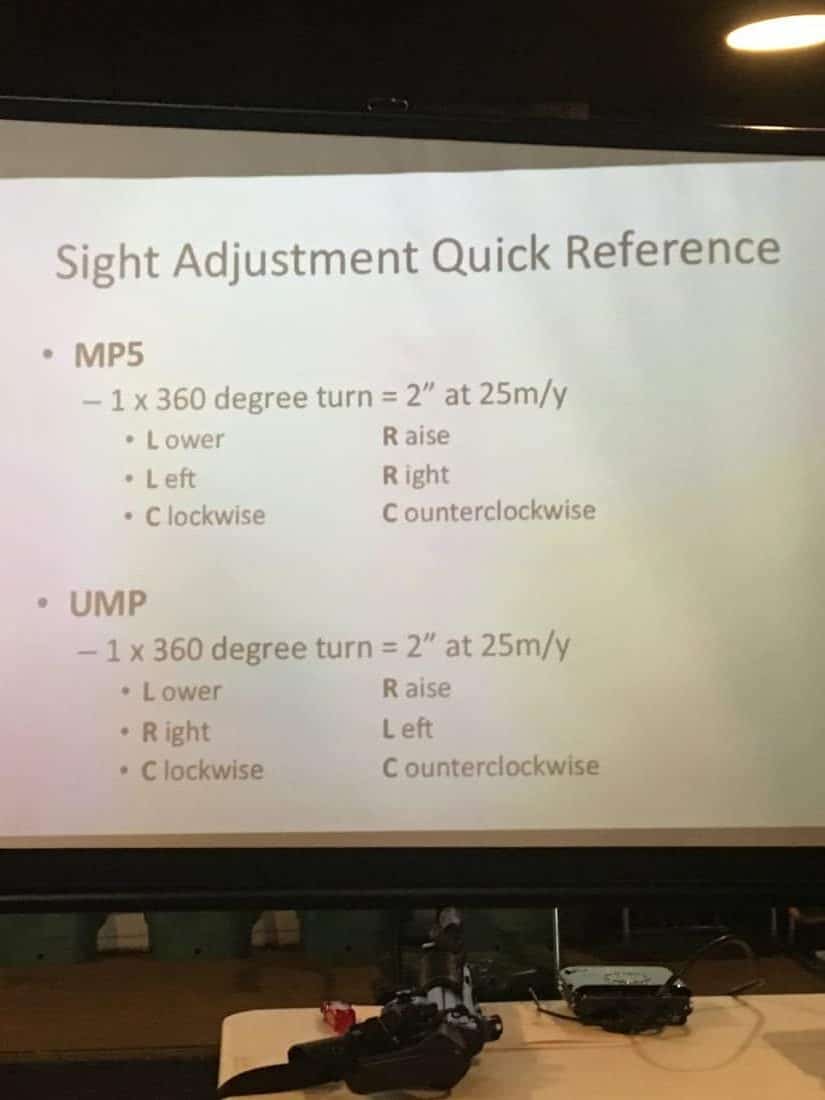
Fun Fact: The MP5 sights are all 25 meter apertures unlike the H&K rifle drum sights which range 1, 2, 3, and 400m
Safety is paramount in a training environment but certain courses can go into minutia and lose student interest, which is dangerous. James and Ben delivered a spot on safety brief, both succinct and informative.
- Safety Rules
- Medical
- Range Procedures, Orientation, Administrative Extras
The 5 rules of firearm safety. Everyone has their own flavor of phrasing they use to describe these but the meaning is the same. They apply at all times. Don’t violate the rules and you never have an accident or incident with a gun. Every negligent discharge or accidental shooting can be traced to a failure to follow these rules.
TREAT every firearm/weapon as if it is loaded.
NEVER point a weapon at anything you don’t intend to shoot.
KEEP your weapon on safe (if applicable) until you intend to fire.
KEEP your finger straight and off the trigger until you intend to fire.
KNOW your target’s foreground and background.
Medical brief. Ben was our on sight medic and Bob was the backup, they would evaluate and treat or evacuate any injury as necessary. General directions for the class amounted to follow any given commands, give the medic space, and if communicating with EMS do not use the phrase “there’s been a shooting”. That point is relevant anytime you are out training with firearms. Injury’s aren’t shootings to EMS, they are training accidents. Method of injury may be gunshot wound but if you give emergency dispatchers “shooting” the cops are coming first with guns and not the ambulance or helicopter you need to transport the injured.
Lastly we covered specifics for the 50 meter range and our individual actions. We had the club isolated so we would not be competing for space or conflicting with any traffic. We would be training on a “hot” range, meaning weapons would remain loaded and holstered or slung as appropriate. “Big Kid” rules, we were expected to maintain our ammo readiness and be safety conscious without our hands being held. Violations, depending on severity, would result in a verbal reminder to termination of your participation in training.
Time to zero
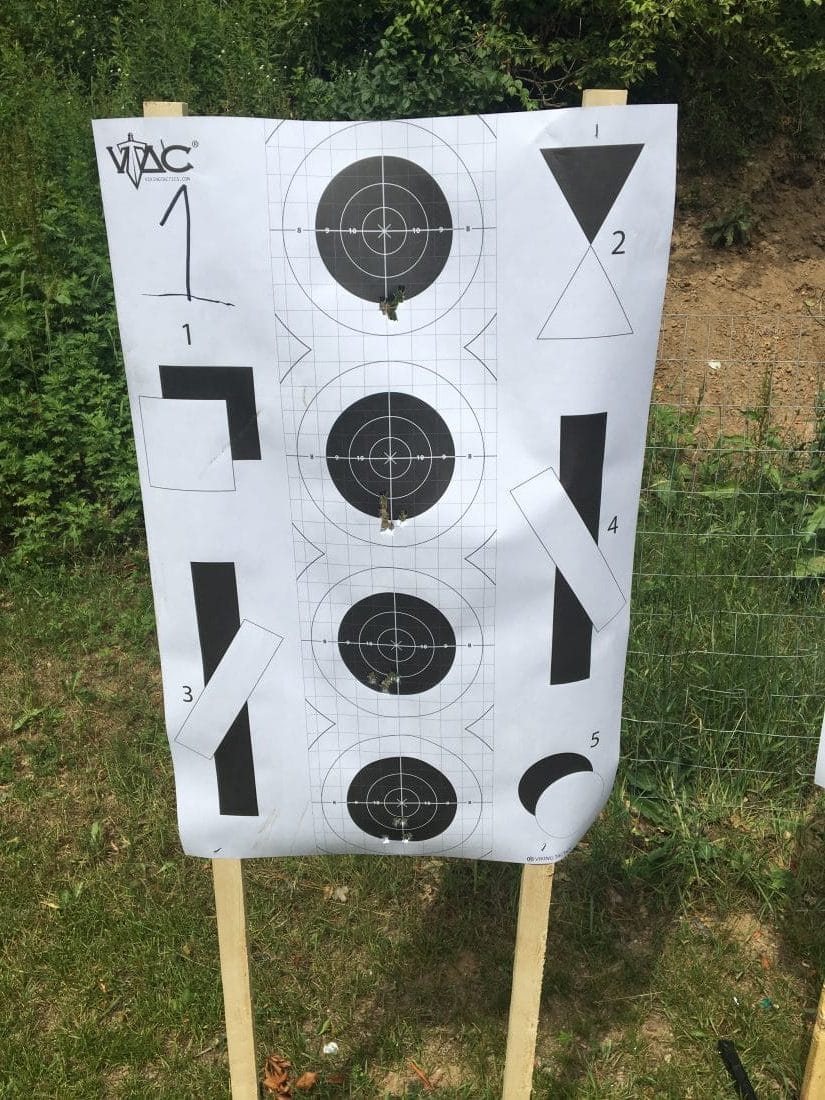
I’ve trained in ranges set like this before and so I quickly stole target 1 on the left side of the range (all brass travels right). We started zeroing with 5 rounds at 5 meters. Moved to 10 meters, 15 meters, and then 25 meters. Notice the rounds walking up closer to center as distance increases, illustrating sight height over bore (the round once fired travels up through or to the sight plane before beginning to drop as it travels further down range). We wanted center hits at 25 meters and I was a little low from my last quick zero.
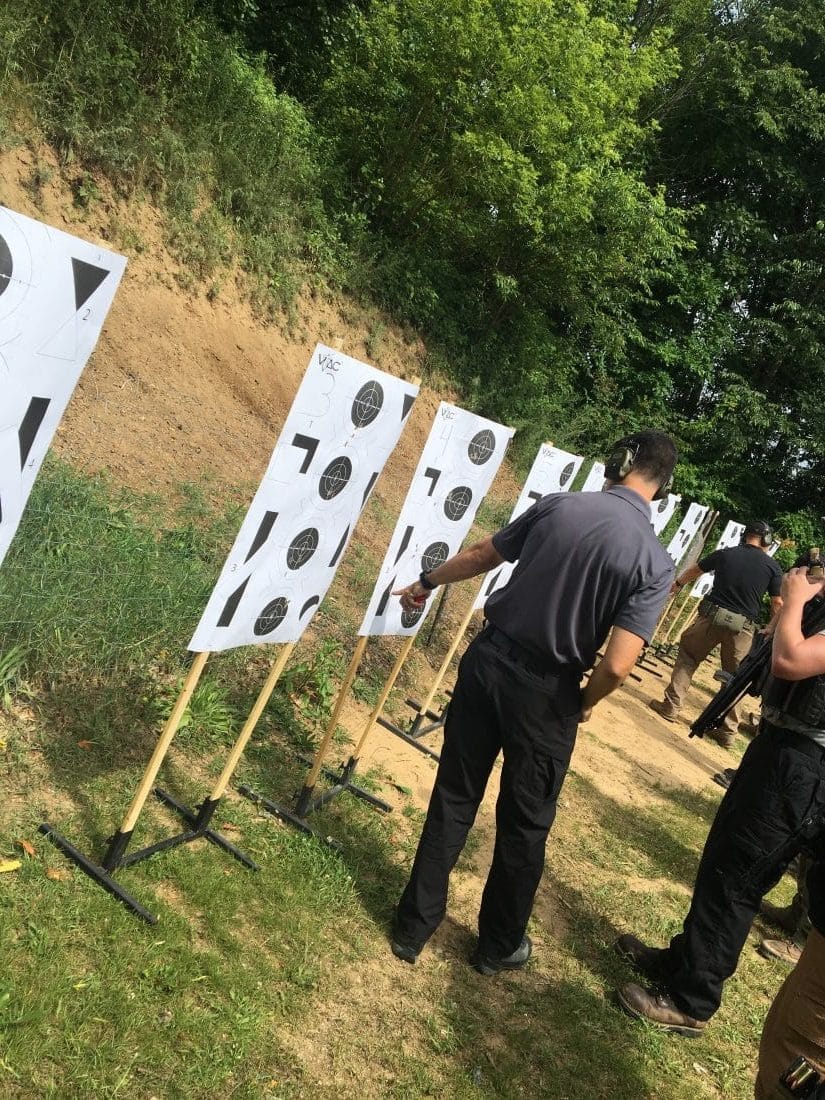
With a practical demonstration and application of sight height over bore by each of us with our guns we adjusted our sights and put down the carbines for the rest of the day. We would be shooting pistol all day and night.
First back to the classroom.

We had a hour discussion on grip, stance, sight picture (my Sig is a cover sight picture) and some basics in body mechanics and how to tie all of them together for better results in speed and accuracy. After rehydrating indoors we went back to the line.

Many pistol and carbine drills shooters do on their own are very low round count and while that helps with ammo conservation more rounds equal more reps. By contrast the first drill we shot was 75 rounds to complete.

“Feel Eyes Finger” is a paced drill shot very close to the target at progressing individual dots. Each line of the drill is 15 rounds, slowly decreasing the number of pistol presentations while increasing the number of shots fired per presentation to identify and correct the small errors and inconsistencies in your grip and sight picture (Eyes and Finger) and teach you what feels correct for the most accurate results. Building accuracy starts close and takes repetitions. This type of shooting doesn’t look high speed low drag on Instagram, instead it produces measurable results and allows an effective drill selection for deliberate focused training.
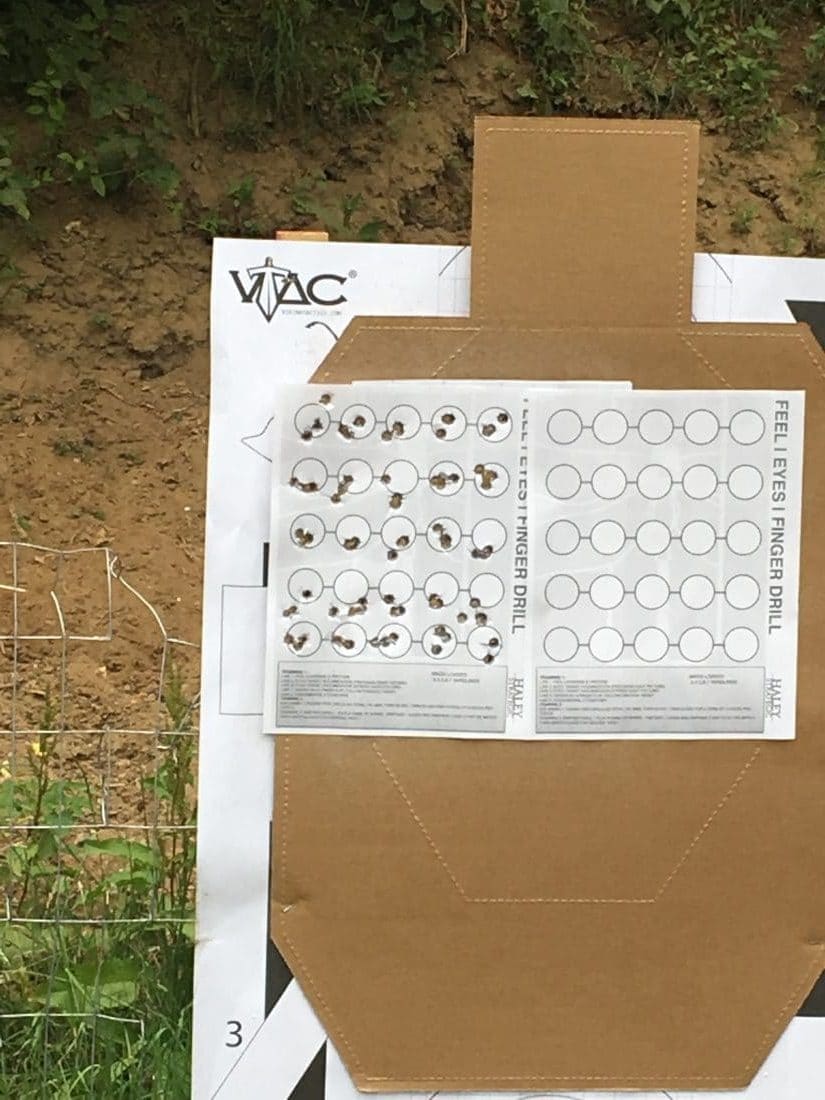
I still have a habit of pushing slightly left and down during trigger press. No my sights weren’t off.. No yours aren’t either.

We shot the drill again using a stress sight picture and compared results. A stress sight (some might call it a flash sight picture) is where you’re focusing on the target instead of the sights and just bisecting your line of sight with your properly held pistol, done correctly you will hit the target where you are looking (aim small miss small?). You’re trusting your body to aim the pistol where your eyes are focusing, it works surprisingly well and its stupid fast with target transitions. You do suffer some accuracy loss but the emulation with a stress/fight body alarm response makes this a realistic fighting use of your sights. Even better you can practice it to refine it.
In one drill and one variant repetition we had 150 rounds into the targets, more than most people will practice in a month was shot in about 20 minutes.
Next we shot eyes closed… No seriously.

Using an adapted for handgun NPA drill (Natural Point of Aim) we fired 5 round groups for consistency without eyesight. The goal is every round breaking the line. Vertical stringing is more acceptable than horizontal.
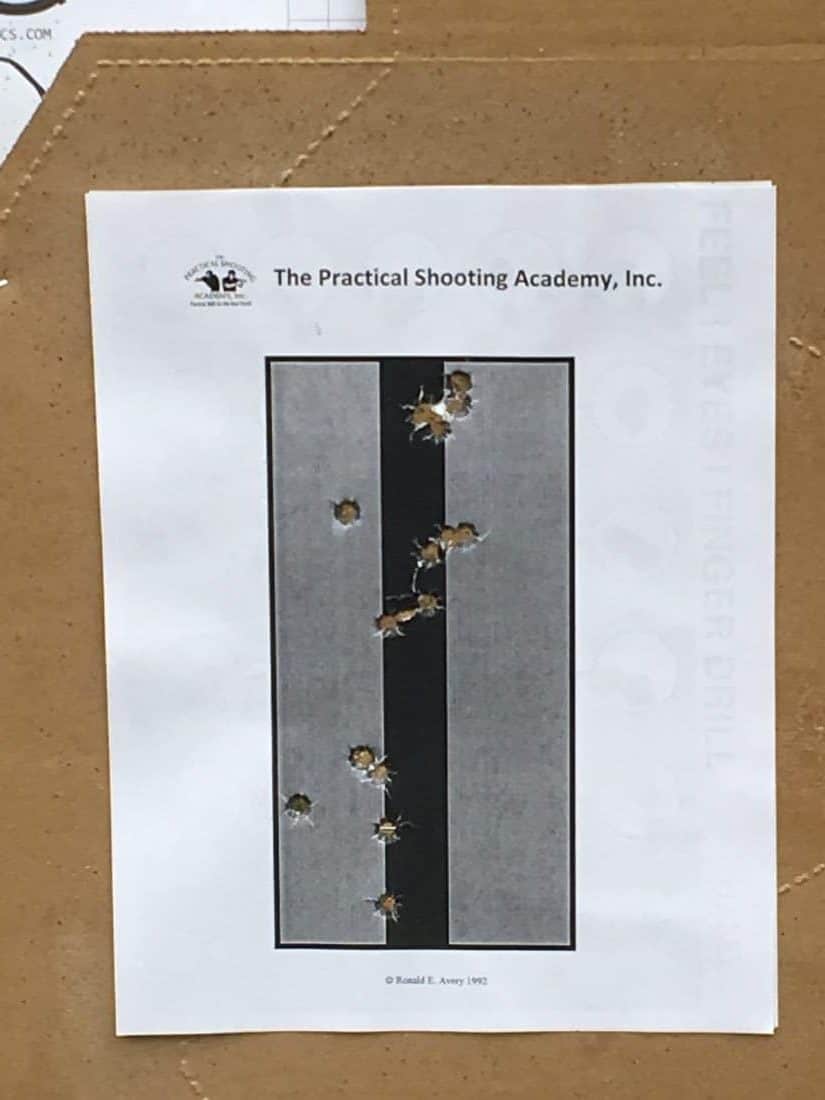
It’s difficult and counter intuitive but after a few attempts the top group was my result. Relying entirely on feel, body mechanics, and proper positioning to keep the pistol on target and rounds consistently grouped was new. But hearkening back to my basic rifle marksmanship from 2007 this drill is identical in fundamental consistency.

We had some fun too, the Dakota Tactical USW served as sidearm and SMG in a uniquely awesome combination. After several hundred rounds working various fundamentals it was getting dark.

No problem there. We grabbed handheld and pistol mounted flashlights and went right back to the line. Firing drills one handed and practicing target illumination while minimizing our signature. Quick flashes to find the target and solid light only while firing, lights off before the guns came off target. We shot most of the daytime drills in the dark to illuminate the environmental and difficulty increases shooting in poor or no light, and to remind us that more than likely if we need to shoot it’ll be in the dark.

Wrapping up at 11:30 pm it was a long days work.
Back at it tomorrow.



